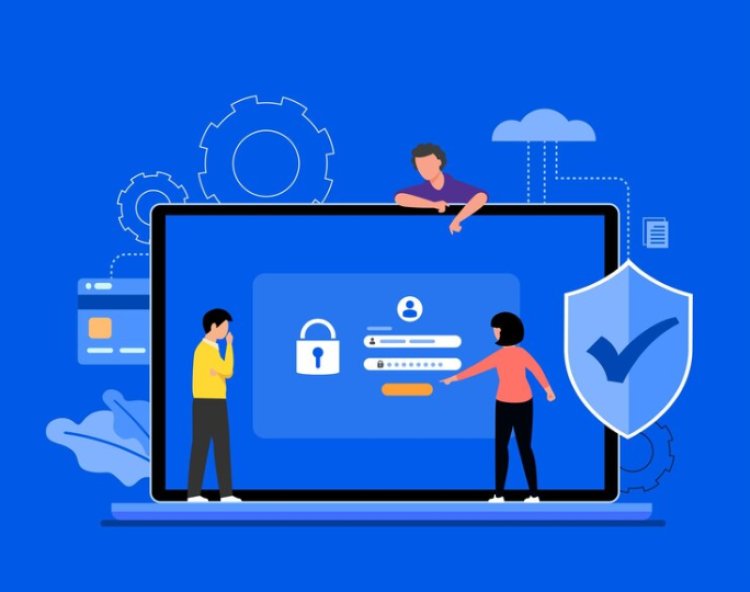What role does DMARC play in combating phishing attacks? GoDMARC
In combating these attacks, DMARC (Domain-based Message Authentication, Reporting & Conformance) plays a crucial role by providing a robust framework to protect email domains from unauthorized use.
Share this Post to earn Money ( Upto ₹100 per 1000 Views )

Introduction
In today's digital age, cybersecurity is of utmost importance, particularly in safeguarding sensitive information from malicious attacks. One such prevalent threat is phishing, where attackers impersonate legitimate entities to steal personal data or financial information from unsuspecting users. In combating these attacks, DMARC (Domain-based Message Authentication, Reporting & Conformance) plays a crucial role by providing a robust framework to protect email domains from unauthorized use.
Understanding Phishing Attacks
Phishing attacks involve fraudulent attempts to obtain sensitive information, such as passwords or credit card details, by disguising as a trustworthy entity. These attacks often employ deceptive emails or messages to lure recipients into disclosing confidential information or clicking on malicious links.
Role of DMARC in Cybersecurity
DMARC is a protocol that builds upon two existing email authentication technologies: SPF (Sender Policy Framework) and DKIM (DomainKeys Identified Mail). It adds a layer of security by enabling domain owners to specify how emails from their domain should be handled if they fail SPF or DKIM checks. This prevents unauthorized use of their domain in phishing attacks and helps in identifying legitimate email senders.
Implementation of DMARC
Steps to implement DMARC
- Policy Definition: Decide on the policy (none, quarantine, or reject).
- DNS Record Creation: Publish a DMARC TXT record in DNS.
- Gradual Enforcement: Gradually enforce the policy to monitor impact.
Best practices for DMARC implementation
- Monitor and Analyze: Regularly monitor DMARC reports and analyze failures.
- Policy Adjustment: Adjust policies based on analysis to maximize effectiveness.
Benefits of DMARC
Implementing DMARC brings several benefits to organizations:
- Enhanced Email Security: Reduces the risk of phishing attacks and email fraud.
- Protects Brand Reputation: Prevents misuse of company domain names in phishing campaigns.
DMARC Policies
Types of DMARC policies
- None: No action is taken on emails failing authentication.
- Quarantine: Suspicious emails are sent to the spam or junk folder.
- Reject: Emails failing DMARC authentication are rejected outright.
Choosing the right policy
- Organizations should choose a policy that aligns with their security and operational needs.
DMARC Reports and Analysis
Interpreting DMARC reports
- DMARC reports provide insights into email authentication results.
- They detail which emails pass or fail DMARC checks.
Using reports to improve email security
- Organizations can use these reports to refine their email authentication policies.
DMARC vs. SPF and DKIM
Differences between DMARC, SPF, and DKIM
- SPF: Specifies which IP addresses are allowed to send emails on behalf of a domain.
- DKIM: Adds a digital signature to emails to verify the sender's identity.
- DMARC: Provides instructions on how to handle emails that fail SPF or DKIM checks.
Working together to prevent phishing
- Integrating DMARC with SPF and DKIM strengthens email authentication and reduces phishing risks.
Challenges in Implementing DMARC
Common challenges
- Lack of Awareness: Organizations may not fully understand the importance of DMARC.
- Complexity: Setting up DMARC correctly requires technical expertise.
Solutions to overcome challenges
- Education and Training: Provide awareness sessions to stakeholders.
- Consultation: Seek assistance from cybersecurity experts or service providers.
Case Studies
Real-life examples of DMARC implementation
- Company A: Reduced phishing incidents by 70% after implementing DMARC reject policy.
- Organization B: Enhanced email deliverability and brand trust with DMARC.
Impact on organizations
- Organizations that implemented DMARC saw significant improvements in email security and brand protection.
Expert Insights
Quotes from cybersecurity experts
- "DMARC is a critical tool in the fight against phishing, offering clear benefits in email security and brand protection." - John Doe, Cybersecurity Analyst
Advice on DMARC best practices
- "Regularly review DMARC reports to fine-tune policies and stay ahead of evolving threats." - Jane Smith, Chief Information Security Officer
Conclusion
In conclusion, DMARC serves as a vital defense mechanism against phishing attacks by authenticating email senders and protecting domain integrity. By implementing DMARC alongside SPF and DKIM, organizations can significantly enhance their email security posture, reduce the risk of phishing, and safeguard their brand reputation. It is imperative for businesses to prioritize DMARC implementation as part of their cybersecurity strategy to mitigate the evolving threat landscape effectively.







